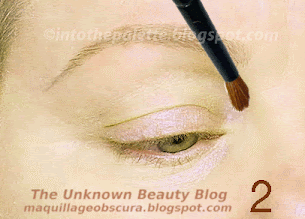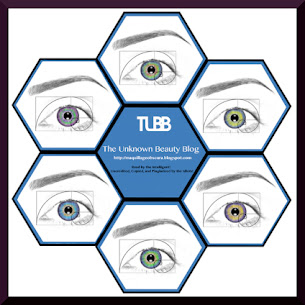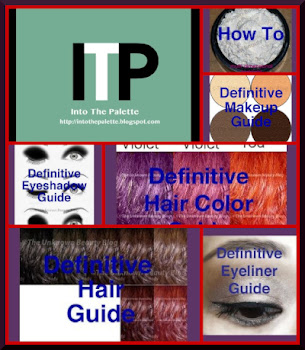If you have gray hair or even grey hair (for the English version), then you know hair color is not the same process for people without it. I covered gray hair in "The Fabulous Greys" post. In this post, I will explain a bit more and also hopefully answer a reader's question a bit more thoroughly.
In a sense you could say gray is another dimension because not only is the color black and white, the texture is probably different from what you had. The diameter may be wider, it will be thicker, and the cuticle may be more slick or smoother making it tough to open them. This is why gray hair is hard to color and why color may not penetrate fully into the cortex.
Let’s review a bit. Hair contains all the primary pigments: blue, red, yellow. Depending on which is the majority, your hair will turn out in the following hair categories.
Black to very dark brown if the majority is blue pigment.
Dark brown to light brown or the variations of red if the majority is red pigment.
Dark blonde to very white blonde or strawberry blonde if the majority is yellow pigment.
Grey hair has none of these or very little.
You have to put these colors back into your hair first to get it to the neutral territory. (Unless you are trying to achieve a more vibrant fun color.)
Gray Hair is Stubborn
It is very stubborn, you will probably need to pre-soften to open up the cuticles alone. How is this done? Well, you can apply 20 volume peroxide on its own and leave it on for about 30 minutes, without washing it out you apply the color. Or you can apply the color (make sure it is only 20 volume) and sit under a heat lamp or dryer for the first 5 minutes of development, then allow it to develop on its own for the rest of the allotted time. Or you could just go for the extreme route and bleach.
Bleaching Gray Hair
Gray hair lacks pigments yet when you bleach, it will turn yellow. I am guessing it is due to the lifting action of the bleach and the leftover pigment in the hair strand. Now, not only will you have to return all the primary pigments to your hair, you will have to counteract the yellow in it with some violet additive or some color with a violet base. Yellow is neutralized by purple (violet).
In a perfect world of just plain color theory, all would do well but we are dealing with hair that sits on top of an living organism and this is where hair color whether it be gray or not has to be calculated.
Let’s use one of the readers as an example, this is Kate's dilemma:
Hi! I am about 40-50% grey with very dark brown hair... I am having issues with getting reddish roots during touch ups and was told that using the 4N and 20V developer I have used for a long time might be lifting too much and not depositing enough color to the grey ones now that they are approaching 50%. Would it make sense to go to a 4N with a 10V developer or to try one of the no developer colors? Do those cover grey more effectively? What would you recommend for covering my roots? I am going to have to do it every 3-4 weeks & have thick curly hair, so was trying not to be too harsh on it ...any advice appreciated!
Before you color, analyze your hair.
1 - What color is your natural hair color before it turned gray? Very dark brown
2 - What color do you want it to be? dark brown
3 - What percent of your hair is grey? Close to 50%
Kate is heading in the right direction. She states she has very dark brown hair which is really a level 3. But she is at almost 50% gray so choosing a color one level higher at 4 doesn't hurt, it gives a softer touch and looks less harsh for her complexion. The 20 volume developer is right also right since she is only lifting one level. The problem lies within what isn't there, the color to counteract the redness caused by the level of hair color chosen.
The 4N Kate is using would give her a dark brown and looking at the hair color at that level, there is a fair amount of red or red/violet which is (are) the default color(s).
- Level 1-Black = Blue (brown)
- Level 2-Black/Brown = Blue Violet (brown)
- Level 3-Very Dark Brown = Violet (brown)
- Level 4-Dark Brown or Dark Redhead = Red Violet (brown)
- Level 5-Medium Brown or Medium Redhead=Red (brown)
- Level 6-Light Brown or Light Redhead= Red Orange (brown)
- Level 7-Dark Blonde = Orange (brown)
- Level 8-Medium Blonde = Yellow Orange (brown)
- Level 9-Light Blonde = Yellow (brown)
- Level 10-very light blonde/white (not grey) = Yellow White (brown)
Now, we know why Kate's hair is picking up the "redness" which she is not happy with. In addition to the "N" series, Kate needs to choose an "A" series or ash color to cancel out the red.
How do we calculate Kate's formula? The easiest way is the percentage of gray equals the percentage of the "N" color. For example, Kate would need a formula of 50% 4N and 50% 4A.
(In extreme cases if the color is still too red, then an extra color additive in an ash tone would have to be added.) Is the light bulb slowly lighting up? Hope this answer your question a bit more, Kate.
And where does the fault lie?
This is pretty much how hair color is calculated whether you have grays or not. The levels with their pigment content are important to know because they contribute immensely to the end result. This is why just buying a box of color isn’t really that simple and when the wrong color happens, you blame it on the company when whose fault was it really? *wink wink*
Hope this post helped some of you. I am not picking on anyone for I have made major mistakes on my hair with color. Can you color your hair like a colorist? Let’s just say you won’t have the same equipment as a salon and probably not the patience. If you really want the celebrity type of hair color, go to a colorist because they deal with these calculations all the time!
Olivia
























